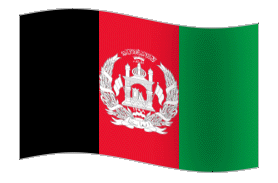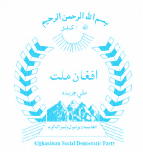Cost of War
Ajmal Shams
South Asia Magazine (February 2014)
It has been almost 25 years since the last soviet soldier left Afghanistan, the country
that has been known as the graveyard of empires. The occupation lasted for about
nine years leaving Afghanistan devastated and vulnerable to regional and international
rivalries that continue to this day. The country never fully recovered from that
shock even with a robust intervention of the international community pumping billions
of dollars into the country’s economy. But one should bear in mind that rebuilding
a country that has suffered civil war for decades is not all about physical re-
The impacts of Soviet occupation on Afghan society have been significant. Millions
of Afghans migrated to neighboring Pakistan and Iran and limited number to countries
of the Western hemisphere. As per the World Bank, Afghanistan lost US$240 billion
in ruined infrastructure and vanished opportunities between 1979 and 2001. One and
a half million Afghans lost their lives with hundreds of thousands becoming physically
and mentally disabled. The social fabric of Afghan society was severely shattered.
Continued war and civil strife caused deep divisions among Afghans along ethnic and
linguistic lines. One of the main challenges for the national politics in coming
years will be to transform the political themes and slogans from ethnic to issue-
The 1979 occupation of Afghanistan by the former Soviet Union was a long cherished
dream of the latter as part of its hegemonic and strategic objectives. However, the
war in Afghanistan was proving to be unfeasible and costlier for the Red Army due
to unyielding resistance by freedom-
On the other side, the ideologically divided Afghan resistance had little or no vision for the political future of the country in case of Communist defeat. Lack of political consensus together with excessive lust for power hampered all efforts by the international community to bring the divided opposition on one table. This, however, does not include the liberal parties like Afghan Millat led by late Shamsul Huda Shams, which was never the recipient of western aid channeled to the armed resistance. Such parties mainly struggled through peaceful means having limited access to participate in armed resistance.
The Mujahideen rule was one of anarchy, mismanagement and oppression. The deterioration of the state started and continued well into the Taliban’s rule. It was also a period when ethnic divisions became even deeper. Pashtuns representing the largest ethnic and linguistic group was particularly marginalized. The Taliban’s coming to power was the direct result of the anarchic and cruel rule of the Mujahedeen whose unstoppable fighting cost thousands of innocent lives.
The Taliban’s harsh rule was also not sustainable by any means. The movement gradually
lost whatever popularity it had gained in the beginning due to their ultra-
The coming to power of President Karzai after the Taliban overthrow in late 2001 through a broad international and national consensus in Bonn was a new beginning for the country after years of civil war and chaos. A major segment of the current ruling coalition, being in power since early 2002, comes from Afghan expatriates having strong political connections and those influential in Mujahideen parties blocking the emerging young and talented technocrats to elevate to high level political positions. Social mobility, therefore, has been an uphill task given the prevalent nature of political dynamics.
Keeping the country united and bridging the deep divisions caused by decades of civil war and foreign interference have been top priorities for President Karzai since being in power. While pursuing his policy of unifying all ethnic groups as one Afghan nation, Mr. Karzai seems to have gone too far, marginalizing the majority Pashtuns. While the ongoing insurgency may not be a direct consequence of antagonistic Pashtuns and is rooted in regional and international strategic political maneuverings, the perception of Pashtuns being unfairly treated has certainly contributed to fueling the insurgency.
One must be fair while making an assessment of where Afghanistan stands today since
the Soviet occupation ended almost 25 years ago. The country has undergone tremendous
changes ever since. State machinery was virtually non-
Social and economic life has thrived particularly during the past decade. Afghanistan’s GDP steadily grew from $2 billion in 2001 to around $20 billion in 2012. International trade increased significantly. Our annual trade with Pakistan has already exceeded $2 billion and is expected to reach $5 billion by 2015.
The World Bank supported National Solidarity Program envisioned by the Presidential
front-
The quality of education is equally dismal. Although thousands of Afghan students
have been offered the opportunity to study in Pakistan, India, the US, Japan and
other countries in the region and beyond, the quality of education at national level
has limited value in the international market and may not meet the local market demands
either. Private education industry has tremendously grown after the government eased
regulations. However, due to the problem of systemic corruption and lack of well-
Due to the complexity of the political dynamics, involvement of deviating international
interests, and lack of intellectual capital at national level, Afghanistan has been
unable to come up with an integrated foreign policy framework to guide its actions
vis a vis countries of the region and beyond. The fluid nature of this dynamism has
caused the status quo to sustain. The coming to power of Mr. Nawaz Sharif, a long-
After 25 years since the end of Soviet occupation, the country stands at a cross-
Despite all the tension, political uncertainty and challenges ahead, with wise and visionary leadership there is every reason to believe in an Afghanistan that is steadily progressing towards peace, stability and economic growth given its vast natural resources, sustainable commitments by the international community and emerging human capital willing more than ever to rebuild the nation.
(Courtesy: South Asia Magazine -
The writer is President of the Afghanistan Social Democratic Party well know as Afghan Millat National Progressive Party and is based in Kabul, Afghanistan.
دافغان ملت ملي مترقي ګوند

Afghanistan Social Democratic Party

Copyright © Afghan Millat 2007-